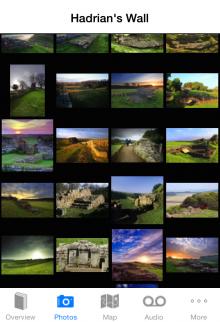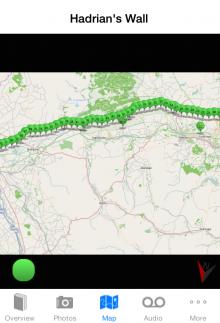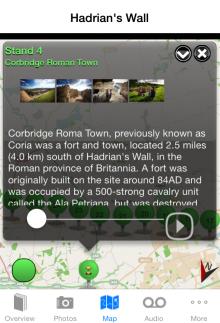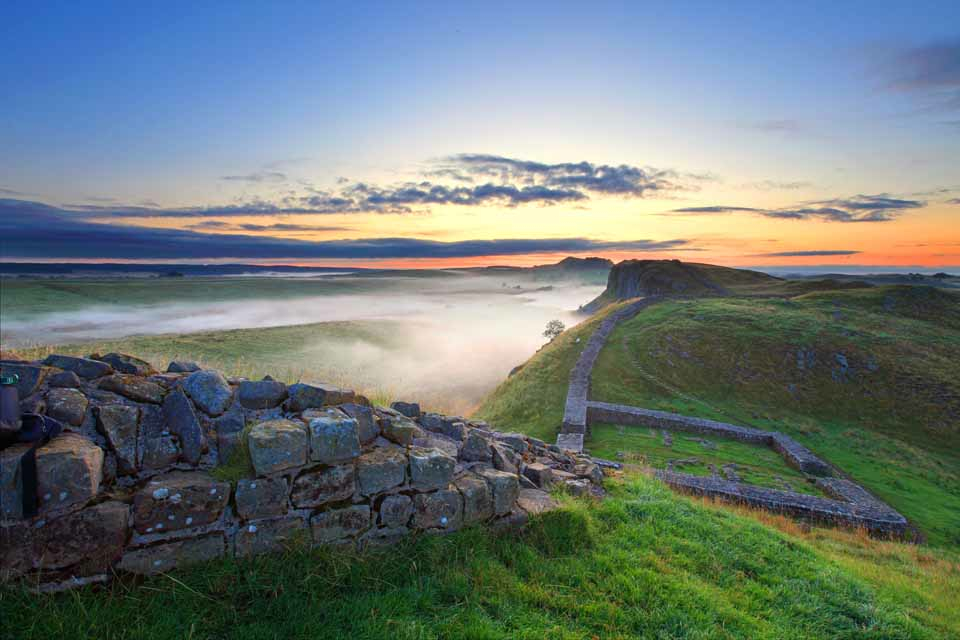The mighty Roman Empire stretched from northern Africa, across to the Middle East, from the western Iberian Peninsula, across central Europe to the far northern reaches of Britannia – effectively covering the then known world.
But here in Britain the Roman military machine came face-to-face with the barbarian tribes of what is now Scotland. Although the Romans had conquered the whole of Britain, their focus was diverted to modern day Romania. Many Roman soldiers in northern Britain were dispatched there to deal with a rebellion, leaving an under-resourced land.
In AD122 the Emperor Hadrian decided to draw a line from the Tyne to the Solway, creating a frontier. This border allowed the Romans control of north-south population movement, trade routes, and the tribal hordes. That new border was Hadrian’s Wall.
The Wall was a massive engineering feat, stretching 80 miles from sea to sea and, in places, reaching 6m in height. In addition to stone there were turf walls, ditches and military installations such as milecastles, barracks, ramparts and forts. It took 3 Legions (roughly 15,000 men) only 6 years to build it all.
Hadrian’s successor Antonius Pius abandoned the Wall and built a new frontier 80 miles to the north – the Antonine Wall. But a single generation later Hadrian’s Wall was reinstated as the northern frontier. Subsequent Emperors over the centuries saw the Wall as the centre of tensions and conflict between the Empire and their northern enemies – the Caledonians, the Picts, the Scots and others - until AD400 when the Romans left Britain.
Today Hadrian’s Wall is Britain’s greatest Roman monument and part of the UNESCO World Heritage Site ‘Frontiers of the Roman Empire’, together with the Antonine Wall and the Upper German Raetian Limes. Here, the WHS stretches 150 miles, incorporating not just the Wall but the Roman sites found down the Cumbrian coast to Ravenglass.
Once a busy, noisy, multi-cultural military zone, Hadrian’s Wall today is a far more tranquil place. Here you can experience breathtaking landscapes, fascinating Roman history, walking and cycling opportunities aplenty and abundant nature and wildlife. There’s so much more to Hadrian’s Wall Country than you might expect...



The Hadrian's Wall Country app brings together everything a visitor may need when visiting Hadrian’s Wall Country. The most popular roman sites are included, along with countless roman remains, mile castles and everything in between; from train stations, to pubs, bars, restaurants and accommodation. The app uses all of the pioneering capability of the iPhone, iPad or iPod Touch to give the user the easiest and most informative experience possible.
All locations of interest are marked on the map giving accurate GPS coordinates along with a map marker that shows the user precisely where they are. Each Roman Site gives a full description of what can be found there, a brief history, opening times and contact details. Each mile castle and other roman remains are also marked on the map showing the grand scale of what Hadrian’s Wall once was, throwing the user back in time! In other areas of the app captivating videos, audio narration, and a wide range of spectacular still images bring Hadrian’s Wall to life.
Click the link below to download the app

